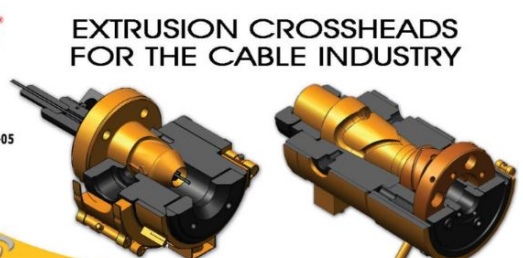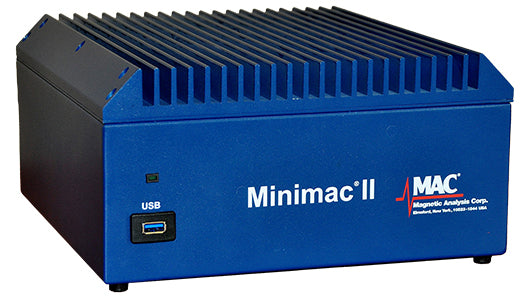“MAC NDT Test Systems for Wire & Cable”
Wire Expo 2024, Uncasville, Connecticut
Minimac® II, Magnetic Analysis Corp.’s latest eddy current tester, will be featured at Booth #607 at Wire Expo. This addition to MAC’s range of eddy current test instruments for detecting surface and sub-surface defects such as laps, slivers and cracks in non ferrous and ferrous wire and rod, features an embedded processor host computer, and can be supplied with one or two test channels. The Minimac®’s versatility is well suited for use in a broad range of test applications in wire and rod mills during production.
Visitors to the booth can see a demonstration of the Minimac® II, testing nitinol wire, an SMA (shape memory alloy) that is frequently used in critical surgical applications such as stents and heart valves. Nitinol wire is often subject to cracks and inclusions, which can form from the melting process during production. Using a Minimac® II eddy current instrument with its phase sector output gate and MAC’s wire tester test coils for small diameter applications, cracks and inclusions can be detected and separate counts for both conditions can be provided, while rejecting only the wire with cracks, for example. MAC can supply test coils as small as .013” ID.
Other applications for the Minimac® II include testing continuous cast small diameter copper rod, installed just before the coiler, but after the rod is produced and drawn down to smaller diameters. The tester can assess grade, using MAC’s Grading Software to automatically categorize the quality level of individual segments and entire coils of wire and rod, during production. The customer can customize the defect types, specify the maximum number of defects for each grade level, and configure categorized reports. Based on the report, the producer can draw down higher graded wire to even smaller diameters. Lower grades are not drawn down as much to avoid problems with breakage in the wire which could end up causing disruptive downtime to re-thread the drawing machine. A Magnetic Inclusion Detector (MID), operating in combination with the flaw detectors, can detect magnetic inclusions, often introduced by steel wire brushes during processing.
Magnetic Analysis Corporation
Magnetic Analysis Corporation
In another application, a Minimac® II can be installed in a wire mill as finish inspection of zirconium, copper, and beryllium copper alloys to detect defects including surface flaws in plating and sub-surface anomalies in bonding, and inclusions in multiple layers in wire ranging from 0.033” to 0.25” (0.838 to 6.35mm) diameter. A noise cancelling test coil and bushings provide improved performance by minimizing noise from mechanical vibration in the wire which otherwise might interfere with the test.
Minimac® II can also be used for testing welding wire, including flux core wire where missing flux can be detected as well as flaws in the wire itself. Checking continuity and locating welds in single and multiconductor insulated wire and cable are other applications. MAC Engineers will be present in the booth to advise on these and many other possible ways to use Minimac® II to solve wire and rod production quality problems. Visitors to the booth can also see the cost effective Rotomac® 25RM eddy current rotary for reliable online inspection for longitudinal surface defects in wire 3 to 25mm diameter. This rotary is especially applicable for use in spring making, cold heading and similar slow throughput operations.
MAC Engineers will be present in the booth to advise on these and many other ways to use Minimac® II to solve wire and rod production quality problems. Information will also be available on the company’s full range of products, including the MultiMac® eddy current tester with up to 8 test channels, and ultrasonic instruments and systems.



